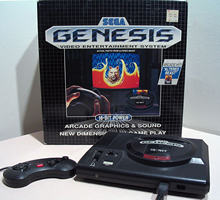 The Hacks & Hombrews series usually deals with the so-called unlicensed games (cartridges, ROMs or otherwise). Personally, I like to sort these pirates, bootlegs or whatever one likes to call them into three categories:
The Hacks & Hombrews series usually deals with the so-called unlicensed games (cartridges, ROMs or otherwise). Personally, I like to sort these pirates, bootlegs or whatever one likes to call them into three categories:
The first, and most common, would be the hack. These are games that were originally published as licensed games and have been altered afterwards. There are several subcategories of the hack: The sprite swap (the game is the same, only the graphics are altered. The Genesis Super Mario Bros. would fall into that category), the edit (same game, only the stages have been somewhat altered, for example Sonic Megamix, an admittedly rather elaborate hack of Sonic 1 which adds additional characters and different level layouts to the Sega classic), and, my personal favorite, the translation hack (like the ones created by MIJET, like King Colossus or the Phantasy Star Adventures).
Then there are what I like to call ‘originals.” Those are cartridges or ROMs that aren’t just altered versions of pre-existing games but are rather completely new games overall. Many of them use sprites or sounds ripped from other games, but the overall gameplay is new. Top Fighter 2000 MK VIII comes to mind here, as does Lion King 2. There is also quite a number of demo ROMs for the Genesis floating around the net that are completely original (and let’s not forget Super Fighter Teams Beggar Prince or the upcoming Pier Solar here, which will be the first completely new game released for the Genesis in over a decade).
Last but not least, there is the final and, as I find, the rarest category: Games that aren’t simply altered versions of already existing ones, but aren’t homebrewed originals either. I am talking about games that have been released for other platforms, before one day someone with Genesis-programming skills decided to re-create the game for Sega’s old 16-bitter.
These are the unofficial ports.
No Seal of Quality Needed
I am going to split this feature into two parts. Part one contains this introduction and a view into two of these unofficial Nintendo ports and see how it holds up compared to his SNES half-brother or as a game on its own. Part two will follow up with one more game as well as a short look at other findings and a final conclusion. One thing to keep in mind beforehand, though: In order to fit these games on a Genesis cartridge, the programmers who ported these games often had to make certain changes. Overcoming the size limitations has let to several different solutions.
Aladdin II (SNES: Aladdin)
Up until the movie Aladdin was released, the licensing rights for adapting Disney characters into video games were handled separately for the Sega and the Nintendo consoles: Sega released some games featuring Disney characters (like Castle of Illusion, or Quackshot) but didn’t adapt any movies or series. Meanwhile, Capcom adapted exactly those series and movies for their rival Nintendo, exclusively. This changed in 1993, when Virgin was allowed to create a game based on the movie Aladdin, which was critically praised. Capcom, however, still held the rights to do an adaptation on their own. So the Genesis and the Super Nintendo saw both their own version of Disney’s Aladdin, both based on the same movie but produced by different companies. Later Disney adaptations would be handled by Virgin for both consoles following the release of The Lion King in 1994.
So this Aladdin II is not a game based on the TV series or some sort of sequel, but rather a retelling of the same story. Other than using the same story, however, the two games are different in almost every regard. So, keeping above in mind, it’s quite understandable why the people responsible for porting the Super Nintendo game to Sega’s 16-bitter would opt to call the game Aladdin II. It is, in fact, the second Aladdin game on that console. And as far as ports go, this one actually is pretty accurate.
The game mechanics have remained the same as they did in the Super Nintendo original: Aladdin can throw apples (which he can collect throughout the levels) to stun enemies or dispatch smaller foes. Enemies are generally defeated by jumping on them. Bosses can take several hits. The programmers managed to get the game controls down pretty well, although they occasionally seem a bit sluggish. Also, the collision detection seems to be a bit off, but it’s bearable, albeit irritating at times. However, in order to fit the game on a 16-Meg cartridge, the porters have decided to make some changes.
The first noticeable one would be the new title screen – although this has probably just been done in order to remove all copyright notices referring to Capcom or Nintendo. More importantly, however, is that the programmers have removed quite a number of sprites. The snipped a few frames out a few characters animations, which leads to some jerky movement. This becomes particularly apparent during boss battles. The first boss hardly seems animated at all whenever he strikes with his sword, and the last battles against Jafar require play totally different since the attack patterns have changed (for example the moving floor has been removed out of the very last boss battle). Some minor character sprites – like one-time foes, or background sprites like Abu, the walking animations of the magic carpet, or the appearance of Jasmin at the end of level one have been cut entirely.
Some changes do influence the gameplay a bit, however. The password option has been entirely cut out of the game, so you have to play through it in one sitting. Further, the SNES version had a Scarab in most of the levels, which served as a mid-level save point. The omission of these Scarabs means that there are no save points either. To offset this, (and in some cases because the programmers didn’t manage to pull off a fluent change in the stages background) the porters have decided to cut some levels into smaller stages. Also, where you originally could find a Scarab you now get an additional heart to your life bar. Two levels, which were very dependent on one-time only sprites, have also been cut entirely (Inside the lamp, stage three and the magic carpet ride bonus stage). So, once you master the somewhat jerky controls, the game becomes easier than it originally was overall.
The port had to take big hits in the sounds and graphics departments. For all the twenty+ levels, there are only three different background tracks in the Genesis version, and I’m positive that I’ve heard at least one of those in another pirated game (Donkey Kong ’99, to be exact!). This music quite often doesn’t fit the mood of the stages. For example, a stage with a fiery cave that included fireballs and lava ended up having soothing, slow muzak. Also, contrary to the SNES version, there unfortunately is no multi-layered background scrolling. Last but not least, while the porters did take the background graphics directly from the original game, they somewhat suffered during the port, leading to some ugly artifacts and pixels in the background graphics (as you can see for yourself in these screen shots).
Overall, however, I have to admit I was pleasantly surprised with this port. It’s very close to the original and plays pretty well! Definitely an effort well made (for a hack, anyway).
Super Mario Bros. 2 (SNES: Super Mario Bros., as seen in Super Mario All-Stars)
Here, the naming situation seems to be a bit confusing at first. As far as I can tell, the first Mario game that was unofficially programmed was the Genesis Super Mario World, the strange hack of an unfinished Chip ‘n Dale prototype (on the pirate market released under the name of Squirrel King, by the way). So, this here is the second Mario game for the Genesis, even though it’s a port of the original Super Mario Bros.
The programmers who dealt with this port didn’t quite have the troubles the porters of Aladdin II went through in order to match the game to cartridge size: They simply took the Super Nintendo game Super Mario All-Stars, which included Super Mario Bros. 1-3 and the former Japanese-only Lost Levels, and only left the very first game in! That way, they could leave the entire game intact rather effortlessly. Well, more or less, at least.
This port is more or less the polar opposite of Aladdin II, quality-wise. Sounds and Graphics have hardly suffered, so you get the original Mario themes to each stage, and the level layout hasn’t been touched at all. Unfortunately, the controls and game mechanics are an entirely different matter.
The control scheme has been changed to fit the three-button layout of the Genesis pad. Ignoring the old mantra “If it ain’t broke, don’t attempt to fix it,” they decided to switch some of the controls around. So now, C makes you jump, B is the Dash, and A is – if you’ve picked the flower – the fireball. They hadn’t changed the old two-button layout for the SNES-version, and for good reason: The old two-button scheme was simple and worked just fine. An additional button makes it a bit harder if you want to fire in the midst of a sprint-jump, for example.
Furthermore, Mario is hardly controllable at all whenever you’re dashing or jumping. Mario Bros. always hard floaty physics, but you could usually pinpoint a jump quite well. Here, trying to control Mario feels more like trying to steer a cow over thin ice – sliding uncontrollably, hardly able to change direction, and once it starts moving, you never now when it’ll stop, though it usually ends up being into an opponent or at the bottom of a pit. Also, the porters followed the “jump on an opponent” formula of dispatching enemies a bit too closely: You can even kill foes who originally were immune to these kind of attacks, like the Venus Fly Traps or the spikes!
And finally, there are the glitches! Super Mario Bros. 2 is full of them, and they range from smaller graphical issues (The green Luigi sprite turning into a red Mario when having the flower-power up and getting hit) to annoying (fireballs or Bowser turning into a mess of jumbled pixels) to downright irritating (gravity and jumping occasionally spinning out of control whenever floating platforms are involved for example, which leads to many accidental deaths).
While it is a nice oddity to have, gameplay-wise the quality of this port is pretty shoddy. The bad controls make the game way harder than it was before, and the glitches and bugs make the whole game more irritating than enjoyable. Still, when you see this cartridge, I would pick it up, if only for the curiosity-factor!
FUN FACT: There is a Sonic pirate out there (My cart reads Sonic 6, but I’ve also seen it floating around under the label of Sonic Jam) that is actually a sprite hack of this game! The Mario sprite has been replaced by a red Sonic that turns blue when picking up a mushroom, though all other power ups have also remained in their original Mario Bros. state! Even more oddly, the controls of Sonic seem a bit more tighter than in Mario Bros. 2, making playing that game a tad more enjoyable!
Rockman X 3 (SNES: Rockman X 3)
The last game I want to describe in greater detail here is this little gem: Rockman X3, to westerners more commonly known as Mega Man X3.
The only official Mega Man game produced for the Genesis is Capcom’s Megaman: The Wily Wars (also known as Rockman Megaworld). As some of you may know, Mega Man and its spin-offs are one of the longest video game series in existence (the “classic” line up having reached number nine recently). Rockman X is the Super Nintendo version of said series and brought it to a whopping five games in its very own right. Why did the pirate hackers choose to port part three for the Genesis? I have no idea. What I also noticed is that unlike with other hacks, the programmers responsible for this port didn’t remove the logo of the original developer – it was a bit strange to see the Capcom logo pop up at the beginning.
At the first glance, the port seems to be very accurate, capturing the Mega Man feeling pretty well. You’ve got your standard blaster, which, in accordance with the X series, you can charge to fire off a bigger shot. You’ve got the Mega Man sprite and the common enemies, and also the energy- and weapon power ups. Oddly enough, there is a strange frame around the screen during play, with a different one for each stage. It seems similar to the frames in Duke Nukem 3D or Doom 32X, so I guess they have been included to reduce the number of active sprites on screen to make the game run smoother. That, or the programmers simply thought it looked nice.
However, once you play this game for a little while, you notice several rather severe changes. First, there aren’t any cut scenes. The X series told a story in which stages where intersected with some cut scenes where characters exchanged dialog and scripted events took place. Though not important to the gameplay, they were one thing that distinguished that spin-off from the classic series and added a nice touch. Considering space restrictions, leaving those out of the game is quite understandable.
Second, another staple that distinguished the X series from the classic one (at least from the earlier games) was armor upgrades that could be found throughout the stage. Mega Man could learn new abilities, and using those abilities he could find even more power ups, motivating the player to play through the stages a second or third time in order to reach that energy tank that was unreachable at the first playthrough. In this port, you have all those armor upgrades and extra abilities straight from the beginning! Without cut scenes and the search for those little extras, the main features that distinguished the X spin-off from the original series have therefore been removed entirely. (By the way, I noticed an odd thing: There seems to be a graphical glitch in which Mega Man, who you’ll generally see in his maxed-out armor right from the beginning, suddenly reverts back to his regular appearance for a few milliseconds when being hit! Does that mean that for some reason, the programmers included all sprites and animations for Mega Man, even if some of them have become superfluous since the armor extras don’t exist anymore? This just seems lazy and shoddy!)
Also, enemies don’t randomly drop power ups, which makes the game pretty hard, but it isn’t such a big deal since the programmers have retained all the “fixed” goodies from the original level design. However, there is one cut that really bothers me. The main distinguishing features of the entire Mega Man series were the weapons and boss system: After each level you can choose which boss to tackle next. After defeating a boss you get his weapon, which is particularly powerful against one (or two) of the other bosses. So you had a number of weapons, each with their own energy bar, that you could switch around as you liked or needed to.
Well, guess what? For some reason, this feature has been removed! The only weapon you’ll have for the entire game is the standard (chargeable) blaster! You don’t get any boss weapons, so the entire premise behind the selection of which boss to tackle next has become moot. Even worse, whereas in the original game the final boss only became selectable after you had completed every stage at least once, in the Genesis port you can directly jump into the boss stage! And since the boss weaknesses don’t apply anymore, and you can only use your blaster, the strength of each boss has been significantly reduced, making the final battle laughably easy in the process!
So, what we have here is a Mega Man port where the programmers took a Mega Man game, kept the sprites and levels, and removed all the mechanics that made this series stand out among all the other platformers out there! It seems the programmers weren’t quite up to the task of capturing the essence of capturing and adequately adapting the original game mechanics to the Genesis, which seems to be a lot harder to do as it is the case with a classic jump-‘n-run. Considering this, however, it was a very odd choice to try and adapt Mega Man in the first place.
Other Adaptations
Donkey Kong Country ’99 (Amalgam of Donkey Kong Country and apparently DKC 2)
While this game clearly is an attempt to bring Rare’s smash hit to the Genesis, it isn’t quite a direct port. Clearly, there are a number of sprites that have been taken directly from the original game, or, to be more specific, from at least two or the three games as it seems. It runs far slower than its Super Nintendo “cousins,”
and combined with the sluggish controls and the bad collision detection this makes for a frustratingly hard game!
Mortal Kombat 5 (PSX: Mortal Kombat Mythologies: Sub-Zero)
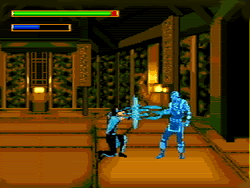 This one is definitely the oddest of them all. Mortal Kombat 5 (as it reads on the title screen) is an attempt to re-create the Playstation game Mortal Kombat Mythologies on the Genesis. All sprites in this game have been ripped out of previous Genesis Mortal Kombat games (I assume Ultimate MK 3 was used). You control Sub-Zero and battle through sprite-swapped variations of Kano, Sonya or Liu Kang, running through levels which are visually designed to resemble their Playstation counterparts. The backgrounds constantly repeat themselves, which makes the maze-like design of the stages irritatingly hard! Also, there are a lot of cheap instant-kill deathtraps in this game that increase the insane base difficulty even more (the difficulty settings in the option screen seem like a bad joke). However, this game is strangely compelling, so you keep playing nevertheless even though you know it’ll only frustrate you. In theory, the whole thing is rather short and incomplete (it apparently ends abruptly after stage four), but it certainly doesn’t feel that way!
This one is definitely the oddest of them all. Mortal Kombat 5 (as it reads on the title screen) is an attempt to re-create the Playstation game Mortal Kombat Mythologies on the Genesis. All sprites in this game have been ripped out of previous Genesis Mortal Kombat games (I assume Ultimate MK 3 was used). You control Sub-Zero and battle through sprite-swapped variations of Kano, Sonya or Liu Kang, running through levels which are visually designed to resemble their Playstation counterparts. The backgrounds constantly repeat themselves, which makes the maze-like design of the stages irritatingly hard! Also, there are a lot of cheap instant-kill deathtraps in this game that increase the insane base difficulty even more (the difficulty settings in the option screen seem like a bad joke). However, this game is strangely compelling, so you keep playing nevertheless even though you know it’ll only frustrate you. In theory, the whole thing is rather short and incomplete (it apparently ends abruptly after stage four), but it certainly doesn’t feel that way!
Yo Ho Ho & A Bottle of ROMs
Agreed, the quality of these ports and adaptations vary widely, mostly from acceptable to downright horrible. They definitely don’t quite measure up to their originals. Considering that these games weren’t done by professional licensed programmers, this wasn’t to be expected, anyway.
They make, however, a great addition to the library, if only for their oddball factor! And in originality and effort, they definitely beat out the simple pirates where some lazy hacker simply swapped one or two sprites and slapped a new title screen on. No, these games tried to recreate the look and the feel of their original counterparts, and while a port certainly doesn’t make an entirely new game, it definitely is a welcome fresh addition to a console which had seen its last official releases ten years ago. I, for one, like every single one of these ports, seeing that each of them gives new life to a console long since abandoned by official support.

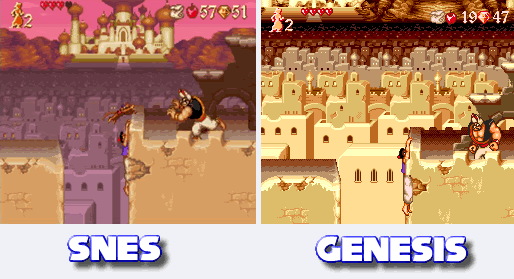
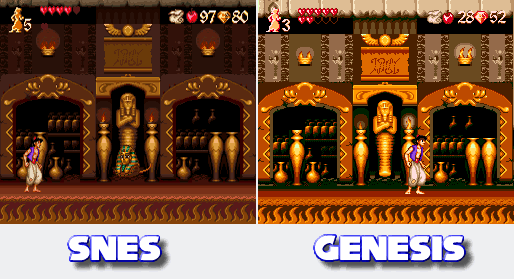
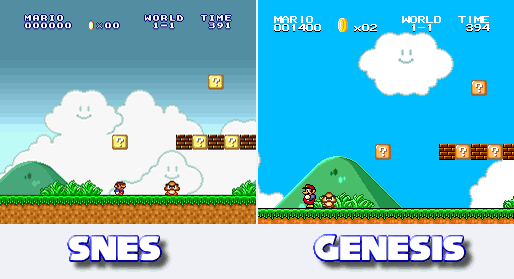
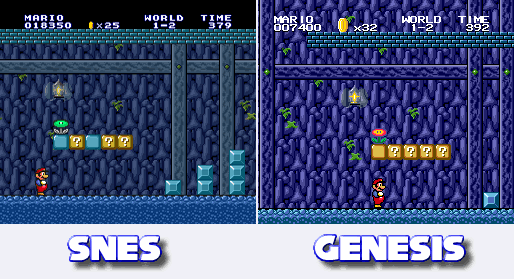
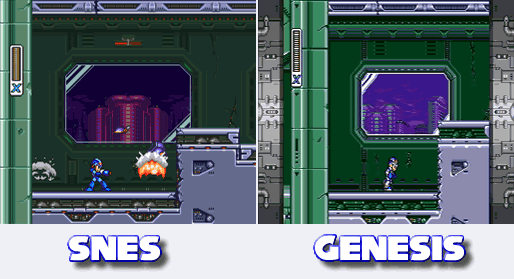
Recent Comments